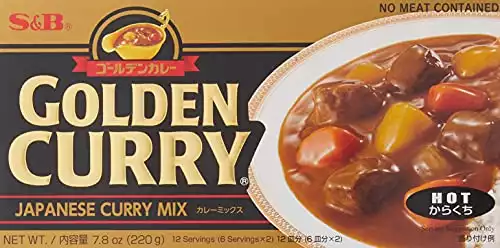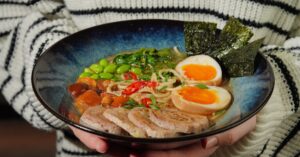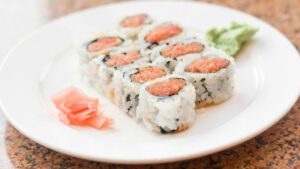My Japan trip is not complete without trying the famous Japanese curry. This delicious dish is readily available in different restaurants. Many families also cook it at home.
Since it is often served with rice, do not get confused if the dish is called “curry rice.” But those who haven’t yet tried it may wonder, how spicy is Japanese curry?
Japanese curry comprises a wide variety of meats, veggies, herbs, and spices. Compared to Indian and Thai curries, this one is sweeter and less spicy.
What is Japanese Curry?
After the importation from India, the Europeans created curry power allowing the general population to cook curry without the need to master and gather intricate spices. During the Meiji period (1868-1912), this curry was brought to Japan. The Japanese altered the dish to their taste.
The common ingredients used in Japanese curry include meat, onions, carrots, and potatoes. The sauce is often made from curry roux or power, a blend of common Indian spices. These spices include:
- Bay leaf
- Cloves
- Cardamon
- Fennel
- Nutmeg
- Garlic powder
- Ginger
- Ground cinnamon
In some cases, curry may contain the following:
- Cayenne
- Sage
- Thyme
- Allspice
- Star anise
The meat of choice is usually beef and pork, which differs from Indian curry in which mutton or chicken is used more often. According to my Japanese friend, beef is the most famous meat for curry in western Japan, while the more common meat in the eastern region is pork.
Establishments that serve Japanese curry are spread out across Japan. I even found some specialized curry restaurants in business districts or train stations. Shokudo, tourist cafes, and family restaurants also offer this dish on their menus.
A large western-style spoon is usually used when eating Japanese curry. In most cases, it is accompanied by pickled Japanese scallion (rakkyo) and a slightly sweet mix of pickles (fukujinzuke).
Is Japanese Curry Spicy?
Commercial Japanese curry powder that is labeled hot is not very spicy. This is because the variation is meant to be mild. Black and cayenne pepper are two spices that increase the heat without changing the flavor.
Some people are confused between Indian curry and Japanese curry. They look similar, but their
What are the Different Forms of Japanese Curry
In addition to powder, here are the different forms of Japanese curry:
Curry Roux
Famous curry roux in Japan (Hot Level)
You can usually find curry roux on Japanese supermarket shelves in blocks of cubes or bars. It looks like a chocolate bar that can be broken off into sections. The common ingredients are curt powder, flour, oils and fats, seasonings, and
Curry Flakes
Although curry flakes are a less common form than curry rox, it is preferred by those who want to adjust the serving quantity easily. These flakes dissolve more quickly when mixed with hot water or soup stock. The common ingredients are sauteed onion, salt, chili pepper, vegetable oils, pepper, curry powder, and wheat flour.
Retort Pouches
Ready-made Japanese curry is also available. They are bought in airtight bags. Once sealed, they are pressure-heat sterilized. This method keeps the food quality unaffected by microorganisms or sunlight.
This Japanese curry form is quick and easy to prepare. All you need to do is place the pouch into a pan with boiling water for 3 minutes. Then, pour the sauce over the rice. Plus, you can store it for a long time at room temperature.
In 1968, retoruto kare, or boil-in-the-bag, was introduced by Otsuka Foods Co. in Japan when they launched their Bon Curry pouch. The inspiration was from pouch sausages used by the Swedish army. In 1973, the company was selling about 100 million Bon Curry packets.
This ready-made curry usually contains onion, carrots, and potatoes in addition to the curry sauce. You do not need to add extra ingredients.
What are the Different Japanese Curry Variations?
Here are some of the top Japanese curry variations you might like to try:
Curry Rice
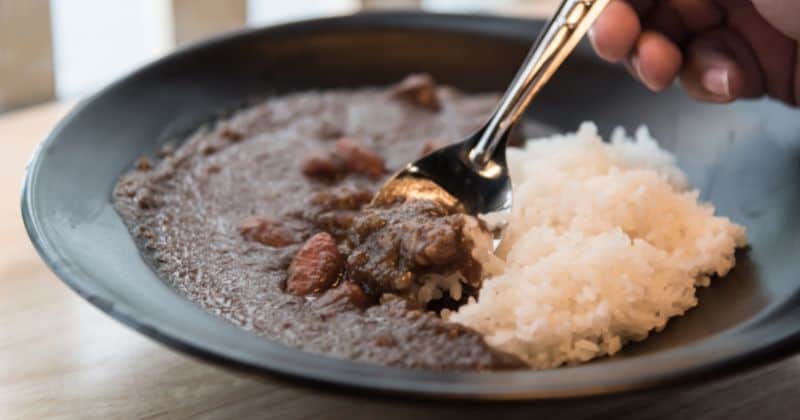
Curry rice is a filling, and satisfying meal commonly served in the company and school cafeterias. This curry dish is often eaten with pickled veggies. Core materials depend on region. For example, beef is the main ingredient in the Kansai region, while pork is commonly served in Tokyo.
Hamburg with Curry Sauce
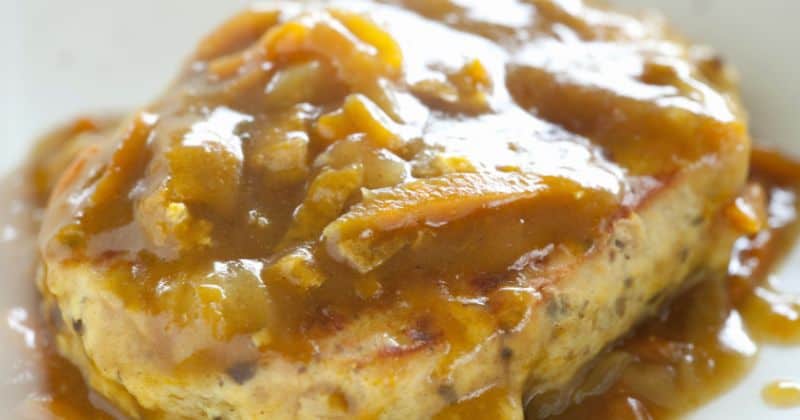
In Japan, Hamburg is a meat patty eaten on its own, not with a bun. It is often served on rice or a hot plate and with brown sauce-like gravy. It is a perfect dish for people seeking a filling and a spicy meal. Sometimes, it has a melted cheese topping, depending on the region.
Katsu Curry
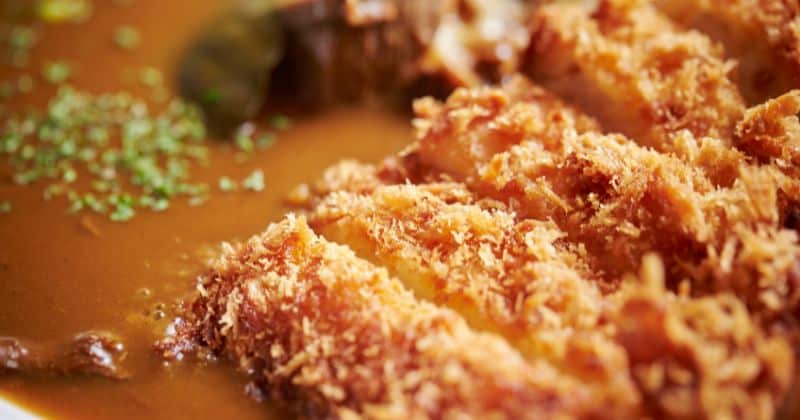
Katsu curry is another substantial meal topped with delicious curry sauce. It is also serviced over or with rice. Katsu is a thick pork slice that is breaded and deep-fried. In Kansai, katsu refers to a beef cutlet.
Black Curry
Black curry, also known as Kuro curry, is an elegant and rich dish made with dark-colored ingredients, like squid ink or bittersweet chocolate. This dish has a dark, luxurious, and smooth sauce.
Curry Pan
Curry pan refers to a crusty, crusted bun that is fried to achieve a doughnut-like texture. It is crispy and fluffy on the inside with a curry filling. The filling varies depending on the popular ingredient in an area. It can be eaten as a meal, but it can also be a delicious snack.
Soup Curry
This Japanese curry variation originated in Sapporo, Hokkaido. It is closest to Indian curry when it comes to flavor and consistency. Unlike the Indian interpretation, where ingredients are slow-cooked in the curry, the Japanese version has grilled vegetables. In some cases, veggies are cooked separately and then arranged in the bowl with pork or other meat before pouring the curry soup.
Curry Udon
Traditional udon is served in a clear broth from kelp stock and smoked bonito. The broth is thinner than the curry rice and can be served with a crispy fried prawn. But sometimes, it can be a Japanese curry variant. This curry is made using similar seafood stock for a unique flavor but with a heavier soy sauce taste.
Yaki Curry
Yaki curry, or baked curry, is Kyushu’s regional specialty. It is believed to be part of the menus in the 1950s after a chef reheated a leftover Japanese curry in the oven. It is often topped with cheese and egg for extra texture and flavor.
Dry Curry
As the name suggests, dry curry lacks sauciness. It is cooked with rice to absorb all the sauce and get the yellow color. Minced meat and veggies are added to resemble fried rice.
Katsu Curry Don
Katsudon refers to deep-fried cutlets served with condiments and egg over rice. Katsu curry don is a katsudon with a curry sauce. It offers a more appealing look since the curry sauce covers the entire bowl of rice. It is topped with a layer of egg and cutlet.

